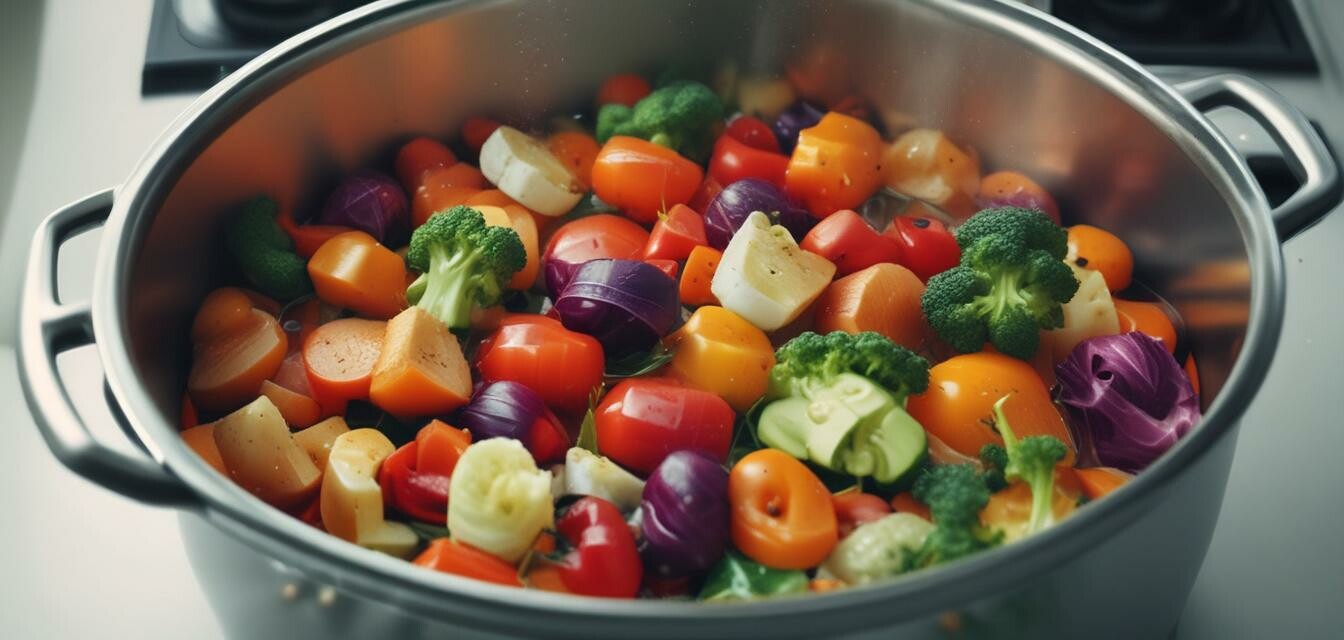
Understanding Cooking Techniques: Boiling vs. Steaming
Key Takeaways
- Boiling involves cooking food in water at high temperatures, while steaming uses vapor to cook.
- Steaming often preserves nutrients better than boiling.
- Both methods have their ideal uses depending on the food type and desired texture.
In the world of culinary arts, cooking techniques can significantly impact the flavor and nutritional value of your dishes. Two of the most common methods are boiling and steaming. This article will delve into these techniques, comparing their processes, benefits, and ideal uses. Whether you're a novice or a skilled cook, understanding these methods will enhance your cooking skills and help you achieve the best results.
What is boiling?
Boiling is a cooking technique that involves immersing food in water (or broth) at a temperature of 100°C (212°F). The boiling process creates bubbles that rise to the surface, cooking the food rapidly. Typically, this method is suitable for cooking a variety of foods, including:
- Pasta
- Vegetables
- Eggs
This method is known for its speed but can lead to some nutrient loss, especially with vegetables. Cooking them for too long will result in mushy textures and a reduction in their flavorful elements.
What is steaming?
Steaming uses vapor produced by boiling water to cook food. This method involves placing food in a steamer basket or on a rack above boiling water. The advantages of steaming include:
- Retention of nutrients
- Enhanced flavor
- Moist texture
Steaming is particularly effective for vegetables and fish, preserving their natural colors and flavors better than boiling.
Comparison of boiling and steaming
| Aspect | Boiling | Steaming |
|---|---|---|
| Cooking Method | Immerse food in water | Food is cooked with steam above boiling water |
| Nutrient Retention | Lower | Higher |
| Texture | Can become mushy | Retains shape and moisture |
| Flavor | Mildly affected | More intense and natural |
| Ideal Foods | Pasta, eggs, potatoes | Vegetables, seafood, dumplings |
When to use boiling
Boiling is ideal when:
- Cooking pasta or rice where a softer texture is required.
- Preparing foods that will be further processed, such as for purees or soups.
- Quickly cooking eggs to the desired doneness.
When to use steaming
Steaming is preferable when:
- Cooking vegetables for maximum color and crunch.
- Preparing delicate proteins like fish that may fall apart in water.
- Using spices and herbs to enhance flavor without dilution.
Tips for perfect boiling and steaming
Beginners Section
- Use a large pot for boiling to allow even cooking and prevent overflow.
- For boiling, add salt to the water before cooking for better flavor.
- When steaming, ensure there is enough water to generate steam throughout the cooking period.
- Keep the lid on when steaming to retain steam and improve cooking efficiency.
- Experiment with different cooking times to achieve the textures you prefer.
Conclusion
Both boiling and steaming are valuable cooking techniques each with unique benefits. Understanding when to use each method can greatly enhance your culinary experience and the quality of your dishes. For more cooking tips and techniques, consider checking our Cooking Tips & Techniques section for additional insights.
Pros of Boiling
- Quick cooking time
- Able to cook large quantities simultaneously
- Simple technique for many foods
Cons of Boiling
- Can leach nutrients from food
- May require additional seasoning for flavor
- Less control over texture
Pros of Steaming
- Preserves nutrients and flavor better
- Enhances color and texture of vegetables
- Is versatile for various foods
Cons of Steaming
- Longer cooking time compared to boiling
- Requires specific equipment (steamer)
- Potential for uneven cooking if not monitored